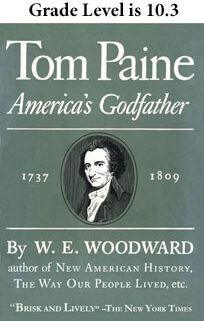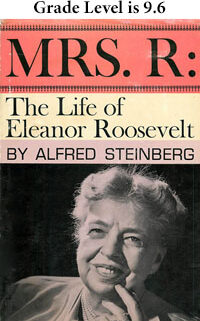Tom Paine-America’s Godfather by W. E. Woodward, Grade Level is 10.3
Download an epub version here:
Download a version for Kindle Fires and other Amazon devices:
An excerpt from a review in The New York Times:
Paine’s Career Highly Dramatic
Mr. Woodward writes of Paine with the brisk and lively vigor that has distinguished all his books. Subtleties of character analysis and beauties of language he leaves to others. But he has a sharp eye for the salient fact, the significant detail. What is the use, he seems to say, of being admired by scholars if only scholars read your books? What is the use of being accurate if you are not interesting? “Tom Paine” provides an answer. It will be read because it is interesting. It records the dramatic career of a great man in able fashion. And what a career it was!
Paine was largely self-educated, poor, a failure and often hungry until he came to America just in time to plunge, into the Revolution. In later years he went to England and was outlawed for sedition against the King. And in France he was a member of the Revolutionary Convention and in that body fought bravely but to no avail to save the life of Louis XVI. But the bloodthirsty Jacobins prevailed and the Committee of Public Safety imprisoned Paine and condemned him to death by the guillotine. He escaped only because of the carelessness of a jail guard who neglected to mark his cell door with the fatal sign in chalk.
Thomas Paine was the friend of Franklin, Lafayette, Washington, Jefferson and Monroe. His written words helped to change the course of history. It is easy to see why when we read again the most famous of them all: “These are the times that try men’s souls. The summer soldier and the sunshine patriot will, in this crisis, shrink from the service of their country, but he that stands it now deserves the love and thanks of man and woman. Tyranny, like hell, is not easily conquered; yet we have this consolation with us, that the harder the conflict, the more glorious the triumph. What we obtain too cheap, we esteem too lightly; it is dearness only that gives everything its value. Heaven knows how to put a proper price upon its goods; and it would be strange indeed if so celestial an article as Freedom should not be highly rated.”
Orville Prescott, June 22, 1945.



